“It is my duty to preserve this aspect of art history, to promote it, and to democratize it.”
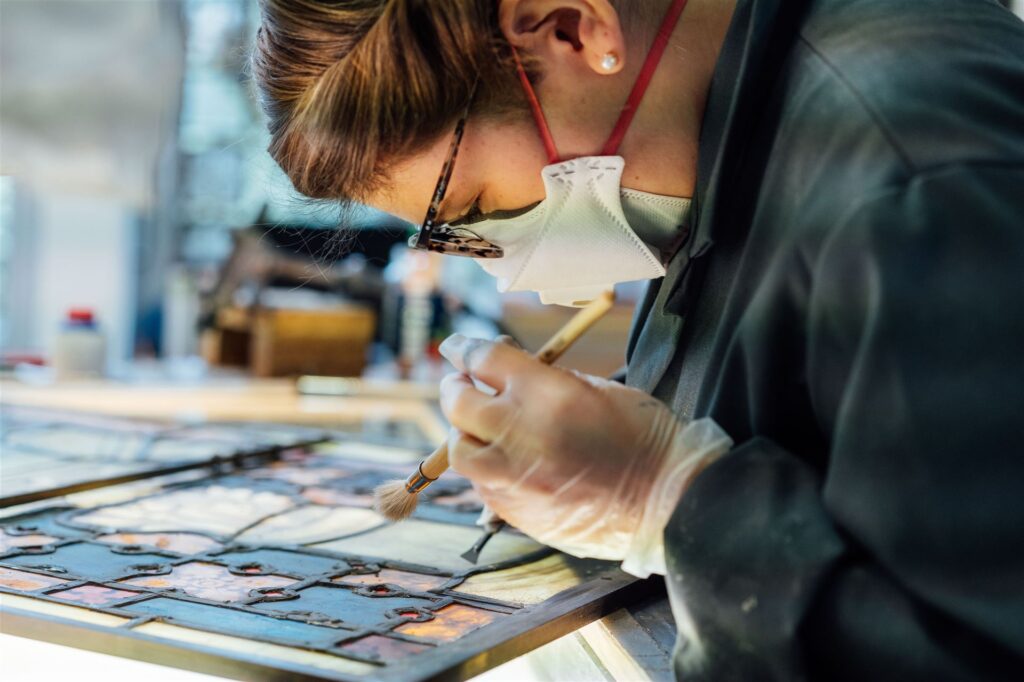
What is Conservation?
The objective of conservation is not to restore objects to a “new” condition, but instead to extend their lifespan as a symbol of history. Conservation includes very specific interventions whose basis is to safeguard an object while also respecting its cultural, historical, aesthetic, ethical and artistic significance. Any object, protected (classified, registered, inventoried, etc.) or otherwise, that presents a sentimental, historic, aesthetic or documentary value falls under this objective.
In the case of stained glass, no two objects are alike and each will undergo various and differing alterations. The internal and external faces of a panel (including its glass, lead and paint) do not have the same characteristics and withstand different environmental conditions. Panels are subject to physical and mechanical damages such as condensation, microorganisms, deposits, wind pressure, vandalism, and the list goes on…
Prior to any intervention, the stained-glass object is studied and documented, creating a condition report, with causes of deterioration identified. Once identified, the conservator can then create a proposed treatment plan which is approved by the object’s owner. It is only then that intervention on the object or its environment can be undergone.
Various types of treatments include, but are not limited to: cleaning, consolidation of the glass, filling of gaps, the consolidation of the lead network, treatment of ferramenta and metalwork, or installation of a protective glazing system.
All of this is done while upholding internationally recognized standards in conservation, such as those established by: the Corpus Vitrearum Medii Aevi (CVMA, 2004), the Charter of Venice (1964), the E.C.C.O. Professional Guidelines (1993/4), the Nara Document on Authenticity (1994), and the Burra Charter (2013).

Kabinettscheibe Suisse dated 1630 before & after conservation, private collection
What is a Condition Report?
In the case of stained-glass, no two objects are identical and each will undergo various alterations. The inner and outer surfaces of a panel (including its glass, lead, and paint) do not have the same characteristics and endure different environmental conditions. Panels are subject to physical and mechanical damage such as condensation, microorganisms, deposits, wind pressure, vandalism, and the list goes on…
This is a preliminary procedure that allows us to establish and document the condition of the object.
The importance of the object, its original materials, the extent of its deterioration, alteration and loss are all part of this documentation.
Documentation comprises of:
- General photographs of the back, front and sides of an object
- Detail photographs of damage or alteration to the object
- Written documentation of the state of the object, its materials, datation, provenance, dimensions, location, etc.
- Diagrams (as shown below) used to annotate and easily depict alteration phenomena (such as missing or loose paint, cracks, growth of microorganisms, etc.)
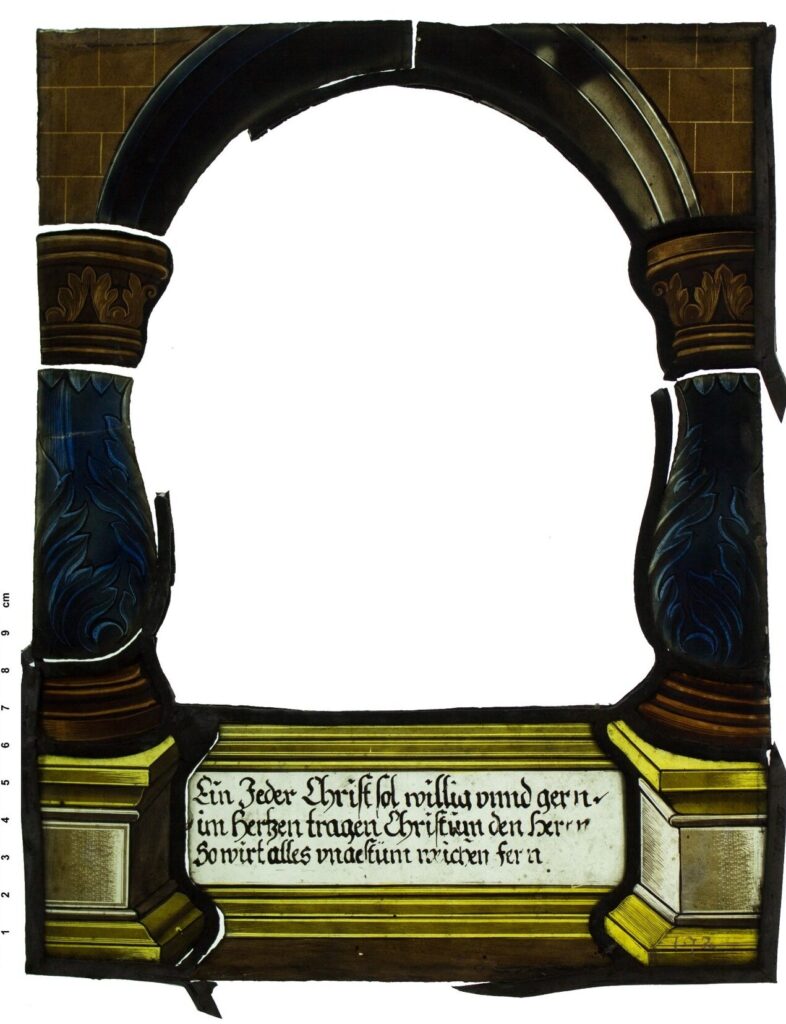
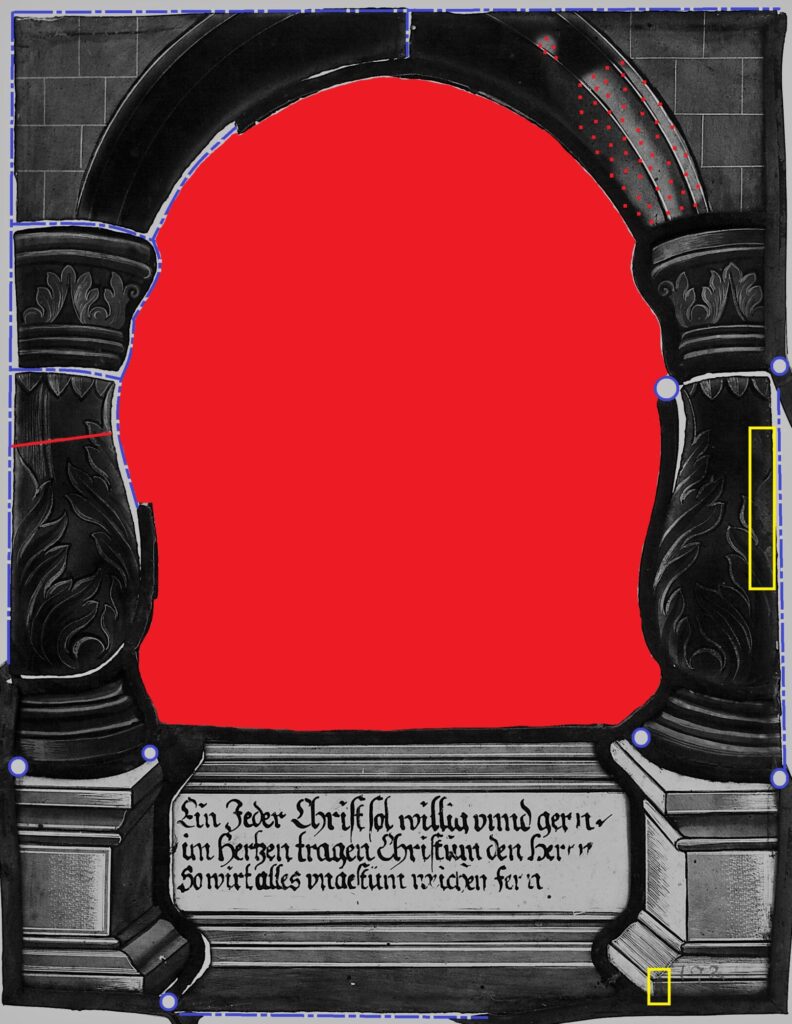
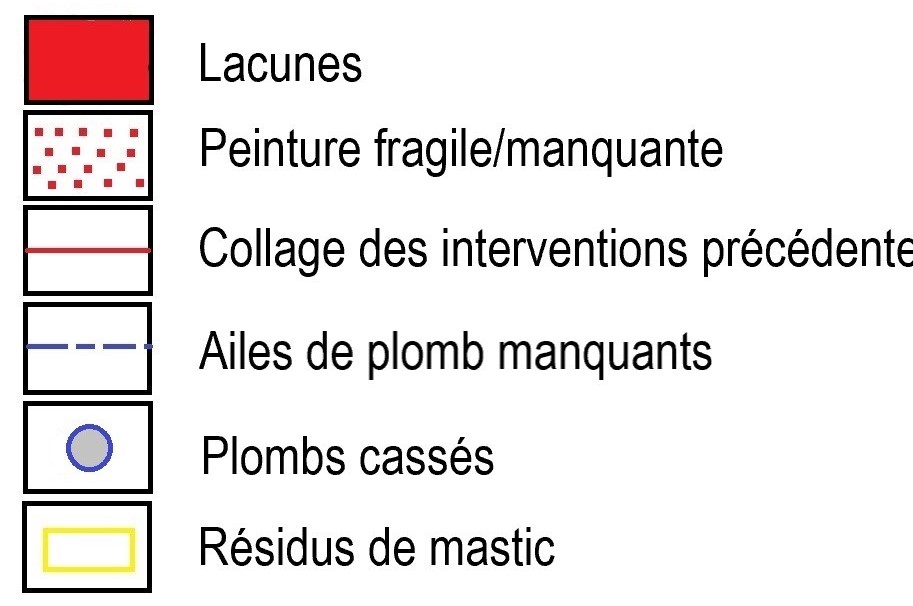
Photograph and diagram of the panel’s condition before restoration

Who is the conservator?
The conservator works on the object itself.
They are a qualified specialist with specific training in conservation, allowing them to intervene with appropriate treatments and an internationally recognized code of ethics.
Their work is a manual art/skill coupled with theoretical knowledge and training that allow them to assess a situation, act upon it and evaluate and understand the impacts of their intervention.
A conservator has several main tasks:
- Examination of the work:
This is a preliminary procedure that allows them to establish and document the condition of the object. The significance of the object, its original materials, the extent of its deterioration, alteration and loss are all part of this documentation. - Storage. When an object will be placed into storage as opposed to being displayed, a conservator is tasked with creating proper long-term and short-term storage solutions. This may include storage conditions themselves or packaging (as shown below).
- Creation and implementation of a treatment plan:
This can be done through direct and indirect measures. Direct measures include restoration in which the appearance of the object is improved in order to aid better in its understanding, or where interventions are taken to stop the process of degradation. Indirect means of treatment are preventive, where actions are taken to retard or prevent (further) deterioration or damage to an object; this is done by controlling of their environment. - Documentation. All interventions are accompanied by photographic and written documentation made before, during and after the intervention.
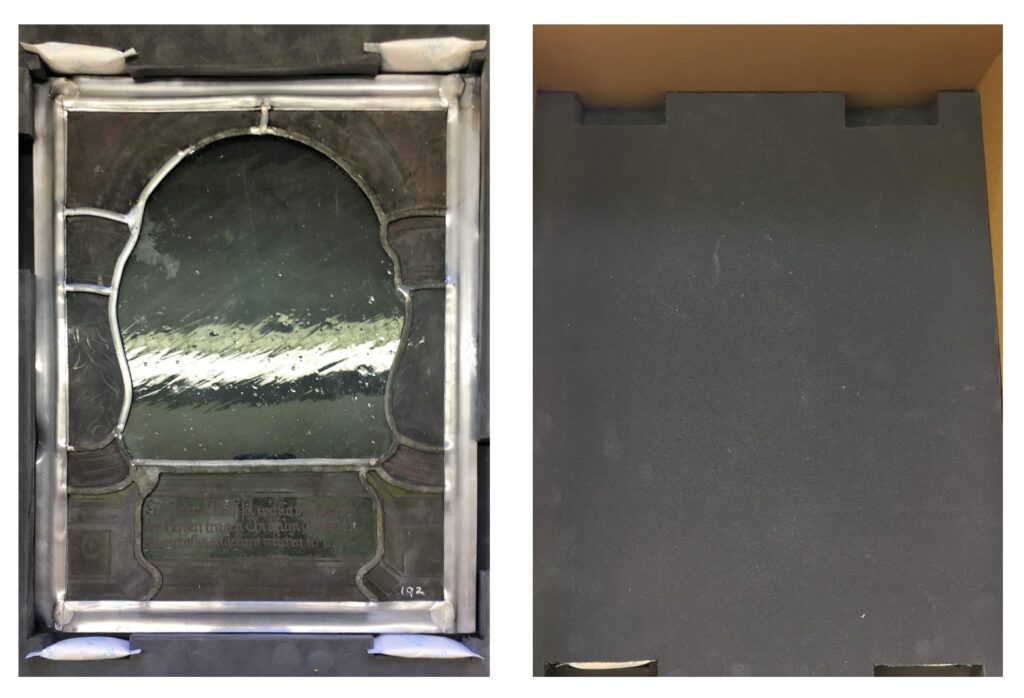
Panel in archival-quality packaging after conservation, ready to be handed over to its owner
Conservators do all that and then some!
For example, they are also educators who participate in awareness and promotion events detailing the importance of conserving and restoring cultural heritage.
They are researchers who study and publish works within their domain of expertise.
They are students, constantly keeping up with modern practices through continuing education, publications, researchers and colleagues.
As well, they are freelance workers who can be hired to valorize heritage or provide recommendations and studies prior to bidding for public contracts.
Receive our burst of color:
Subscribe to keep up to date with the latest news: